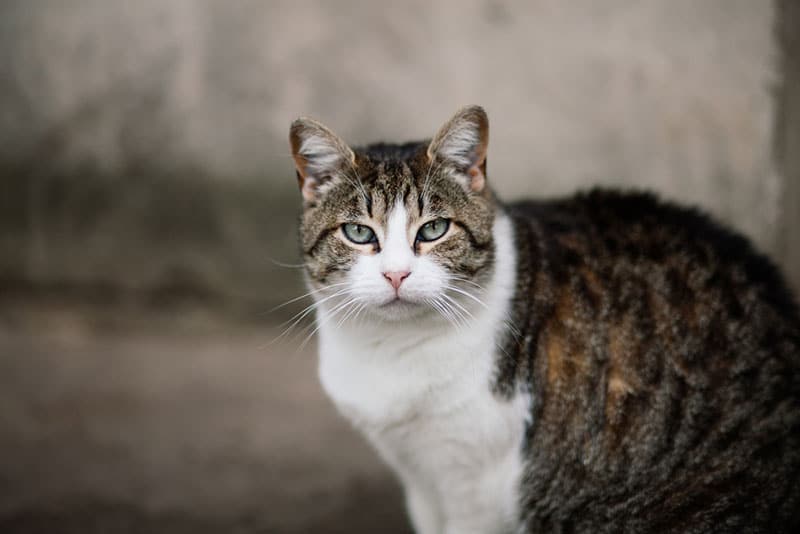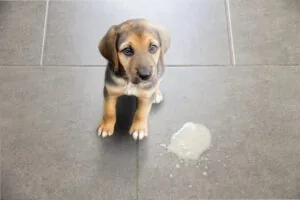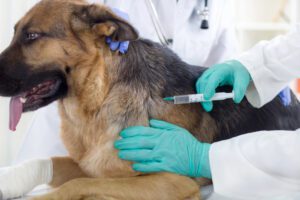Feline Diabetes: Symptoms, Diagnosis and Treatment

Feline diabetes, or diabetes mellitus, is a disease of the pancreas, a small organ located near the stomach. Just like with humans, the pancreas aids in proper digestion and regulates the glucose (sugar) level in the body.
Diabetes mellitus is usually classified into 2 types of disease:
- Type I diabetes mellitus results from almost total destruction of the cells that produce insulin. This appears to be a rare type of diabetes in the cat.
- Type II diabetes mellitus is different because insulin-producing cells remain, but either the amount of insulin produced is not enough, there is a delayed response in secreting it, or the tissues of the cat’s body are resistant to it. Obesity is a factor in type II diabetes, which appears to be the most common type of diabetes in the cat.
What are symptoms of diabetes mellitus in cats?
The four main symptoms of diabetes mellitus are:
- increased thirst
- increased urination
- weight loss
- increased appetite
Because of the nature of cats, these signs may go unnoticed, especially in the early stages of disease or if a cat spends a lot of time outdoors. Cats that are fed canned or semi-moist diets receive much of their water intake from their food, so increased water intake may be harder to recognize.
How common is diabetes mellitus in the cat?
Diabetes mellitus is the second most common endocrine disease in cats. It is seen more frequently in middle-aged to senior cats and is more common in males than females. While the exact incidence is unknown, the number of diabetic cats is increasing due to the increase in the number of overweight and obese cats. It is important to note that a cat three pounds over its ideal weight is considered obese, and that means the average domestic cat weighing 13 pounds or more is at high risk for developing type 2 diabetes mellitus.
How is diabetes mellitus diagnosed?
Diabetes mellitus is diagnosed by the presence of the typical symptoms (increased thirst, increased urination, increased appetite, and weight loss), a persistently high level of glucose in the blood, and the presence of glucose in the urine.
The normal level of glucose in the blood is 80-120 mg/dl. It may quickly rise to 250-300 mg/dl following a large or high-calorie meal. It can also quickly rise if the cat is stressed out (called stress-induced hyperglycemia) such as from being in a veterinary office.
That’s why it’s important to determine glucose in the urine, to show that the increased levels of sugar in the blood and urine are persistently above 280 mg/dl, and for the cat to exhibit signs of diabetes before a diagnosis can be made.
To conserve glucose within the body, the kidneys do not filter glucose out of the bloodstream into the urine until an excessive level is reached. This means that cats with normal blood glucose levels will not have glucose in the urine. Diabetic cats, however, have excessive amounts of glucose in the blood, so it spills into the urine. Once blood glucose reaches 180 mg/dl or more, the excess is removed by the kidneys and enters the urine. This is why cats (and people) with diabetes have sugar in their urine. Definitive confirmation of feline diabetes mellitus may require a specialized test called a serum fructosamine test.
How is diabetes mellitus treated in cats?
Diabetes mellitus is a treatable condition. Although long-term treatment requires commitment and dedication, it can be rewarding to manage this condition successfully in a beloved cat.
Initial steps in treating a diabetic cat include removing potential predisposing causes for diabetes. For example, some medications predispose cats to develop diabetes, and withdrawal of these drugs may lead to resolution of the condition.
Obesity is a risk factor for diabetes in cats, so weight normalization may actually lead to resolution of diabetes in some cats. All cats with diabetes mellitus benefit from being fed a well-balanced diet, and your veterinarian is the best source for guidance about which nutrient profile will best benefit your cat. Many cats with diabetes mellitus benefit from a diet that is high in protein and relatively low in carbohydrates because a relatively low carbohydrate diet decreases the amount of glucose absorbed from the intestinal tract and lowers the requirement for insulin.
Unfortunately, while nutrition is a critical element of diabetes management success in cats, it is generally not as easy as making a simple nutritional choice. Most cats require regular insulin injections to control the diabetes mellitus, at least initially. Your cat may require several hospital visits until an appropriate insulin dosage is determined. New technology has allowed the adoption of home glucose monitoring with the use of a simple device. Additional home monitoring can involve the evaluation of urine for the presence of glucose, although this is not a very sensitive way to monitor glucose levels.
Most cats will achieve initial stabilization within a few days to a few weeks and will require once or twice daily injection of a small dose of insulin. Very small needles are available which cause no pain to the cat, and within a short time, the procedure becomes routine. Your veterinarian will determine the appropriate administration times, dosages and type of insulin that your cat requires.
Do treated cats need to be monitored?
It is important to monitor treatment of diabetes mellitus to be sure the cat is doing well. Home monitoring of blood glucose is becoming more popular and more common, although part of treatment monitoring will involve periodic blood samples collected by your veterinarian.
To assist in the care of your cat, it is particularly valuable to keep accurate records of the following information:
- Time of insulin injection (Daily)
- Amount of insulin injected (Daily)
- Amount and time of food fed and eaten, and at what time (Daily)
- Amount of water drunk (Daily)
- Weight of the cat (Weekly)
What happens if my cat receives too much insulin?
If a cat receives too much insulin, it is possible for the blood sugar level to drop dangerously low. For this reason, it is important to be very careful to ensure the cat receives the correct dose of insulin. Clinical signs displayed by a cat with a very low blood sugar level include weakness and lethargy, shaking, unsteadiness and even convulsions. If a diabetic cat shows any of these signs it is important to take a blood glucose reading if you have a home monitoring device and seek immediate veterinary attention. In mild cases of hypoglycemia, you may observe “wobbling” or a “drunken” walk, or the cat may seem sedated when you call or pet them.
Low blood sugar (hypoglycemia) is a medical emergency! Your veterinarian can advise you about the specific emergency treatment of low blood sugar in your cat that you can deliver at home until the cat can be seen by a veterinarian.
Share This Post
Recent Posts
About Shallowford Animal Hospital
Shallowford Animal Hospital and The Pet Spa at Shallowford are dedicated to the exceptional, compassionate care your pet deserves. Pets hold a very special place in our families, and we treat yours like our own.



